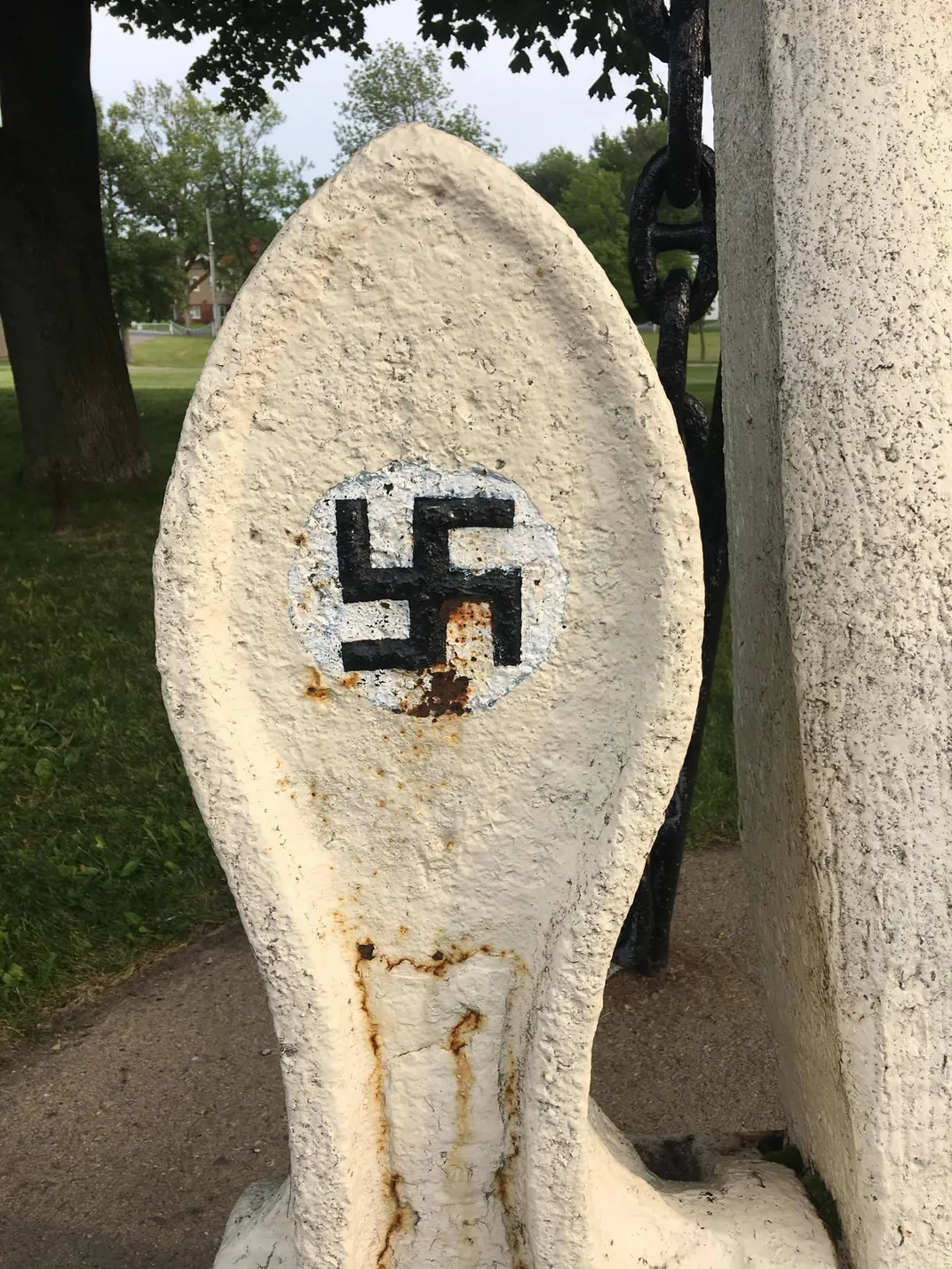Canadian Town’s Swastika-Adorned Anchor Causes Anger and Confusion
The anchor appears to predate the Nazi era, but an activist says it should nevertheless be removed from a public park
/https://tf-cmsv2-smithsonianmag-media.s3.amazonaws.com/filer/8c/8a/8c8a8d20-e576-4e27-88bc-d917ac9de421/screen_shot_2017-08-25_at_111718_am.png)
In a little Canadian town, a battle is being waged over a swastika-adorned anchor, which is prominently displayed in a public park. There is one caveat, however: while its plaque identifies the artifact as being from the World War II era, an investigation shows that the anchor appears to be of British pre-war origin, and its swastika may have been inscribed as a benign symbol of good luck.
As Jason Magder reports for the Montreal Gazette, the anchor sits in a nautical-themed park in the town of Pointe-des-Cascades, Quebec. The park is located next to a museum dedicated to the maritime history of the St. Lawrence River and the Soulanges Canal.
A plaque in front of the anchor erected by the local historical society explains that the relic was discovered in 1988 in Quebec’s Lac St-Louis. The plaque also claims that the anchor dates to WWII, and that the swastika embossed onto one of its flukes "seems to denote the ship’s country of origin" (Germany, in other words). Though journalistic investigations over the past few days have revealed that this information about the anchor’s provenance is likely incorrect, when the activist Corey Fleischer first encountered the anchor last week, he had every reason to believe it was stamped with an authentic Nazi symbol.
The Montreal resident, who runs a power-washing business, is the founder of an initiative called Erasing Hate, where he is often called upon to remove hate symbols that have been graffitied onto public property, according to the CBC.
Fleischer tells Smithsonian.com that when he arrived in Pointe-des-Cascades, he saw that the anchor appeared to have been freshly painted. “I walk into this park and I see this anchor ... that's painted immaculately [in] three colors,” Fleischer says. The body of the anchor was beige, and on its left fluke was a black swastika surrounded by a white circle.
He began using his equipment to scrub the paint, hoping to make the swastika less visible. While he was working, he was stopped by the town mayor, Gilles Santerre, who phoned the police.
A video of the interaction shows a police officer explaining that Fleischer cannot alter the anchor because “it’s not yours.”
“It’s part of our history,” a second officer says.
“It doesn’t matter if it’s part of our history,” Fleischer replies. “This should not be in a park displayed with kids, with grandparents.”
As news of the conflict spread, Marc Montgomery of Radio Canada International published an investigation arguing that the swastika in question was not in fact a Nazi symbol. It pre-dates WWII, he claims, and was one of many anchors manufactured by W.L. Byers of Sunderland, England, starting in the late 1800s.
“[Byers] was apparently fascinated by the swastika, as were a great many people and organizations of the time, by this symbol found on pottery unearthed by archaeologists at Troy and which is believed to be an ancient sign both there and in India for good luck and auspiciousness,” Montgomery writes, noting the company discontinued its use of the swastika when the Nazis appropriated the symbol.
In a statement, the mayor of Pointe-des-Cascades says he is committed to installing a plaque that better explains the anchor’s history, according to the CBC. Santerre also notes that that the town “does not endorse Nazism.”
But correcting the plaque’s historical inaccuracies isn’t enough to satisfy Fleischer. Since it was re-painted by the town, he says, the anchor has borne a prominent black swastika surrounded by a white circle. “This is something that Hitler used on his flags,” Fleischer explains. “This is something that is notorious.”
The design was indeed espoused by Hitler. In Mein Kampf, according to the United States Holocaust Memorial Museum, the Führer described his vision for what would become the Nazi emblem: “a flag with a red background, a white disk, and a black swastika in the middle.”
Fleischer also contends that the anchor belongs in a museum, not in a public park where it might upset unsuspecting passersby. “The last thing that I'm trying to do is erase any history,” he says, but adds that the swastika “is no longer a sign of just peace.”
“This is a sign that Hitler used to massacre and almost erase an entire population of people,” he says. “There is no room for any swastikas ... to be in a public space.”
